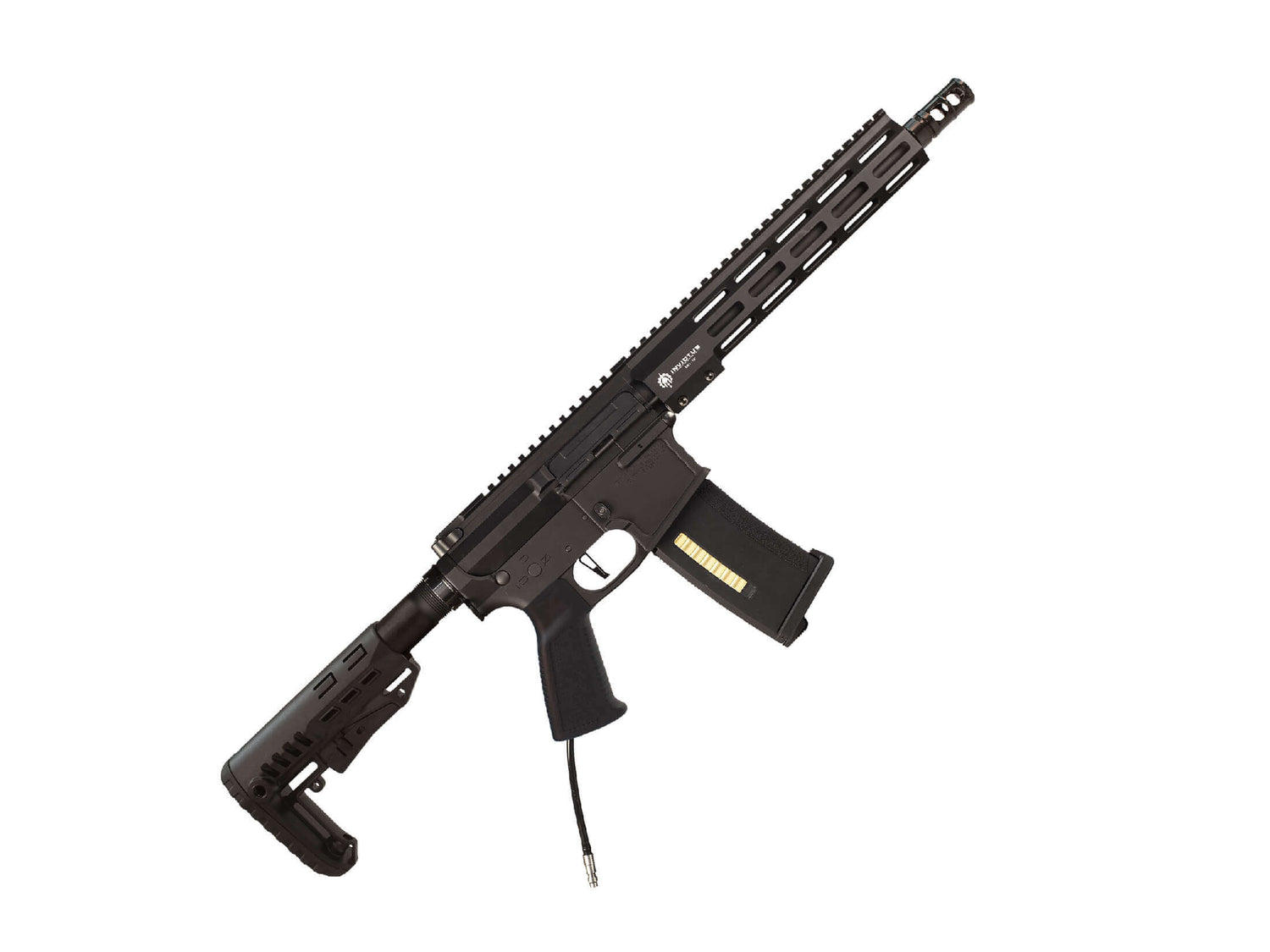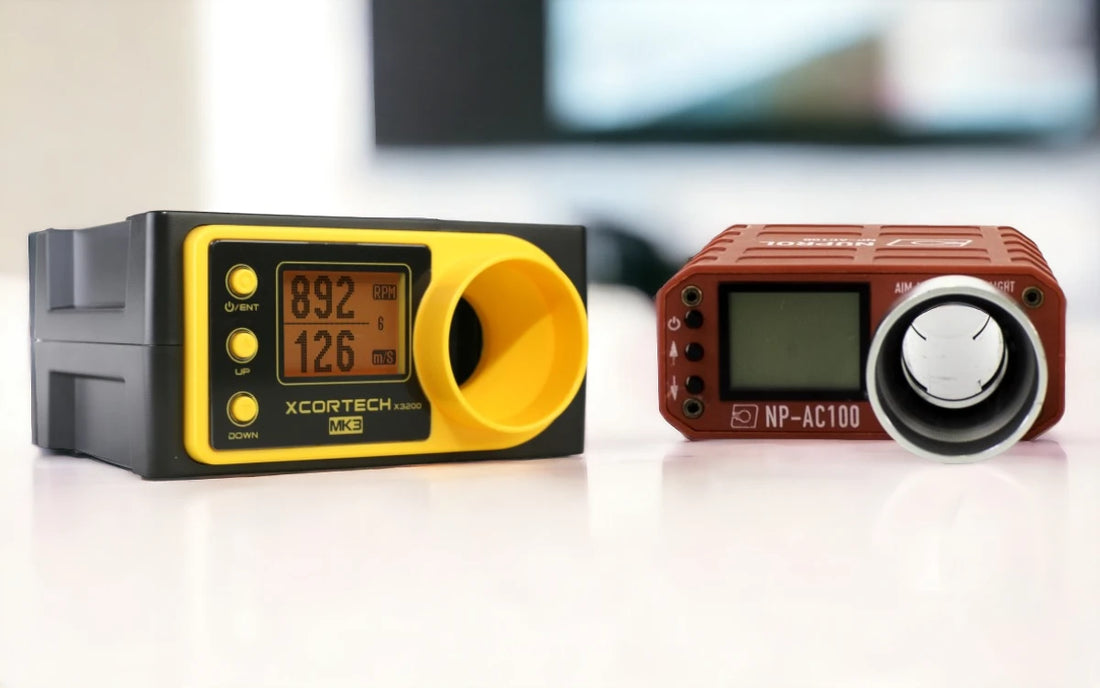Mastering the Impact of BB Weight on FPS and Joules in Airsoft
When it comes to airsoft, precision and accuracy are paramount. Ensuring your equipment is perfectly calibrated can mean the difference between victory and defeat on the battlefield. One crucial factor in achieving this balance is understanding how the weight of your BBs can affect your airsoft RIF's performance. In this comprehensive guide, we will delve deep into the world of BB weights, exploring their intricate connection to FPS (Feet per Second) and joules in airsoft.
Demystifying BB Weight
Before we embark on this enlightening journey, let's establish a firm understanding of BB weights. BBs, or ball bearings, are the lifeblood of airsoft skirmishes. These small, spherical projectiles, typically made of plastic, come in an array of weights, primarily measured in grams (g) or milligrams (mg). Common BB weights encompass a broad spectrum, ranging from the featherweight 0.12g to the substantial 0.48g, with the 0.20g and 0.25g variants reigning as the most favored choices among seasoned airsoft enthusiasts.
Unpacking FPS and Joules
FPS (Feet per Second) stands as a pivotal metric in the airsoft realm. It signifies the velocity at which a BB exits the barrel of your airsoft RIF, offering a snapshot of the kinetic energy it carries. This velocity has a direct bearing on the range, accuracy, and penetrating power of your shots. In general terms, a higher FPS translates to greater velocity and, consequently, heightened impact.
Joules, a fundamental unit of energy, play a crucial role in quantifying the kinetic energy of a moving BB. The joules of an airsoft projectile are determined by the mass (expressed in kilograms) and velocity (measured in meters per second) of the BB. The more joules a BB carries, the more potent its impact.
Navigating the BB Weight vs. FPS and Joules Nexus
Now, let's embark on an expedition into how the weight of your chosen BBs can influence FPS and joules:
1. Lighter BBs (0.12g - 0.20g)
Elevated FPS: Lighter BBs tend to yield higher FPS readings because they demand less energy to accelerate.
Diminished Joules: Despite the lofty FPS figures, lighter BBs bear less energy (expressed in joules), making them less effective in terms of impact and penetration.
2. Standard Weight BBs (0.20g - 0.25g)
These mid-range BB weights are the preferred choice of many airsoft players due to their balanced performance. They offer respectable accuracy, range, and impact.
3. Heavier BBs (0.28g and Above)
Depressed FPS: Opting for heavier BBs usually results in lower FPS values because they necessitate more energy for propulsion.
Amplified Joules: Contrary to the lower FPS, heavier BBs can boast higher joule ratings, equating to augmented impact and superior penetration.
Navigating Your BB Weight Selection
The quest for the ideal BB weight hinges upon various factors, including your airsoft RIF's specifications, power source, and, significantly, your style of play. Here are some concrete guidelines:
- Close-Quarter Engagements: In confined spaces or indoor skirmishes, lighter BBs (0.20g or lower) can be your allies. They facilitate a higher rate of fire, albeit with a trade-off in accuracy and range.
- Mid-Range Battlefields: The dependable standard weight BBs (0.20g - 0.25g) excel in most scenarios. They strike an impeccable balance between accuracy and impact, making them the go-to choice for many players.
- Precision Long-Range Shots: When pinpoint accuracy over extended distances is your goal, heavier BBs (0.28g and above) reign supreme. Their added weight
- Precision Long-Range Shots: When pinpoint accuracy over extended distances is your goal, heavier BBs (0.32g and above) reign supreme. Their added weight enhances stability during flight, ensuring that your shots find their mark.
The Thrill of the Game, the Importance of Safety
The world of airsoft is a dynamic one, filled with strategic thinking, tactical maneuvers, and the rush of adrenaline on the battlefield. But beneath the competitive spirit lies a fundamental truth: safety is paramount. Ensuring a fair and safe playing environment for everyone is crucial, and that's where understanding the difference between FPS and Joules comes in.
FPS: A Flawed But Familiar Friend
For many years, Feet Per Second (FPS) limits have been the primary method for regulating the velocity of Airsoft Replicas (RIFs). Think of FPS as measuring how fast a BB leaves the barrel. It's a familiar concept, but it has a significant flaw: FPS doesn't account for BB weight. A heavier BB traveling at a slower speed can deliver a much greater impact than a lighter BB traveling at a higher speed. This inconsistency can lead to unfair gameplay and, more importantly, potential safety concerns.
Enter Joules: A More Precise Measure
The airsoft community is embracing a new standard – Joule-based limits. Joules (J) represent the unit of kinetic energy, a scientific way to measure the force a moving object carries. In simpler terms, it tells you how much "oomph" a BB has behind it. Here's the key difference: Joules consider both the velocity of the BB and its weight. This creates a more comprehensive picture of an RIF's power, leading to several advantages:
- Standardization for a Level Playing Field: Unlike FPS, which can vary slightly depending on conversion processes, Joules provide a universal measure of energy. This ensures consistent gameplay regulations regardless of location. No matter which field or event you participate in, you can expect a fair and balanced playing environment.
- Enhanced Player Safety: By factoring in both BB weight and velocity, Joule limits allow for a more comprehensive safety approach. This minimizes the risk of injuries, especially for players at close quarters. Fields can set specific Joule limits based on engagement distances, ensuring a safe and enjoyable experience for everyone.
Calculating Joules: Making the Switch Easy
Want to make sure your airsoft RIF meets the field's safety limits? This handy FPS calculator takes the guesswork out of joule conversion. Just enter your RIF's FPS and BB weight, and the calculator will show you the joule rating. Play smart, play safe!
Beyond Joules: Building a Culture of Safety
The move towards Joule limits is just one step in fostering a culture of safety and fair play in airsoft. Here are some additional tips to keep in mind:
- Always wear proper eye protection: This is non-negotiable. Use high-quality, full-seal goggles rated for airsoft to safeguard your eyes.
- Maintain your RIF: Regularly inspect your RIF for any malfunctions or worn-out parts to prevent accidental injuries.
- Communicate effectively: Call your hits clearly and honestly. Don't be afraid to remind others about safety rules if you see someone engaging in unsafe practices.
- Sportsmanship matters: Remember, it's a game. Treat your fellow players with respect, even if you're on opposing teams.
Join the Movement: A Safer, Fairer Future for Airsoft
The airsoft community thrives on camaraderie, strategy, and the thrill of competition. By embracing Joule-based limits and prioritizing safety, we can create a more enjoyable and inclusive environment for everyone. Share this knowledge with your fellow players, advocate for Joule limits at your local fields, and let's work together to ensure that everyone can experience the excitement of airsoft with confidence and peace of mind. Remember, airsoft is about having fun, testing your skills, and forging lasting friendships – all while keeping safety at the forefront.


